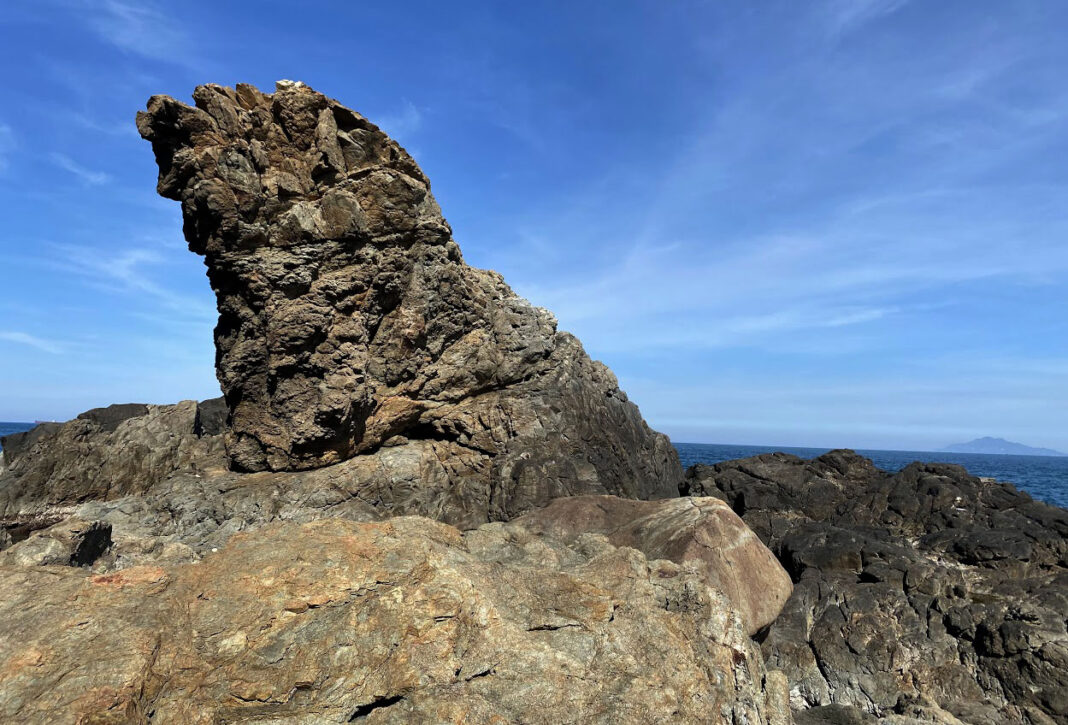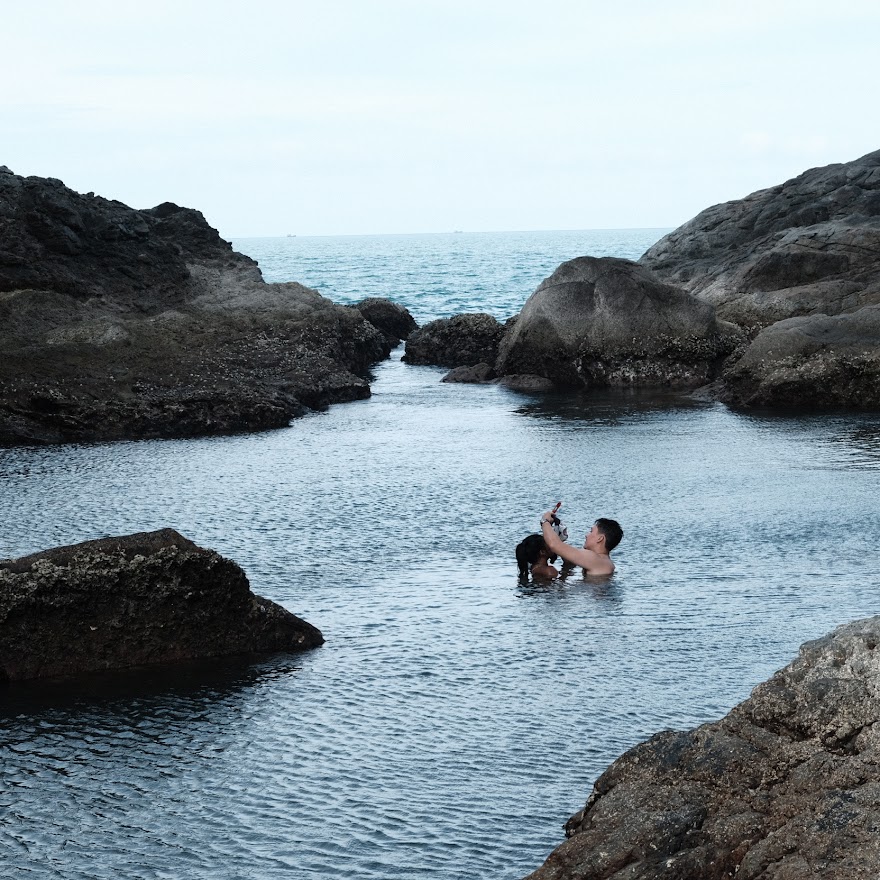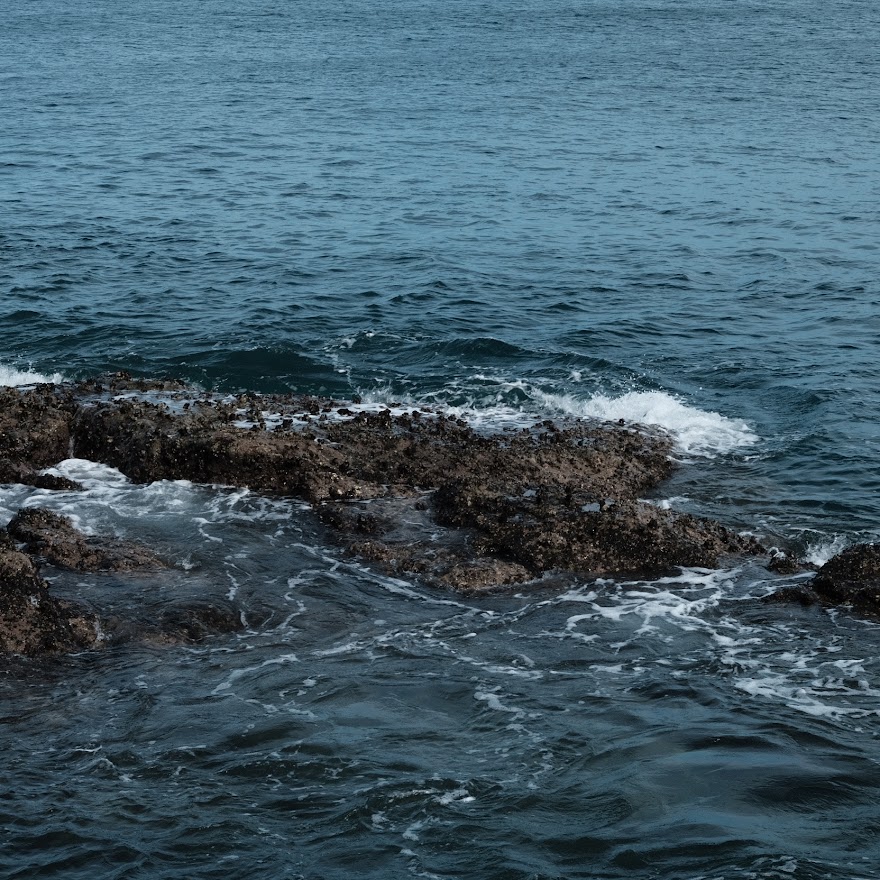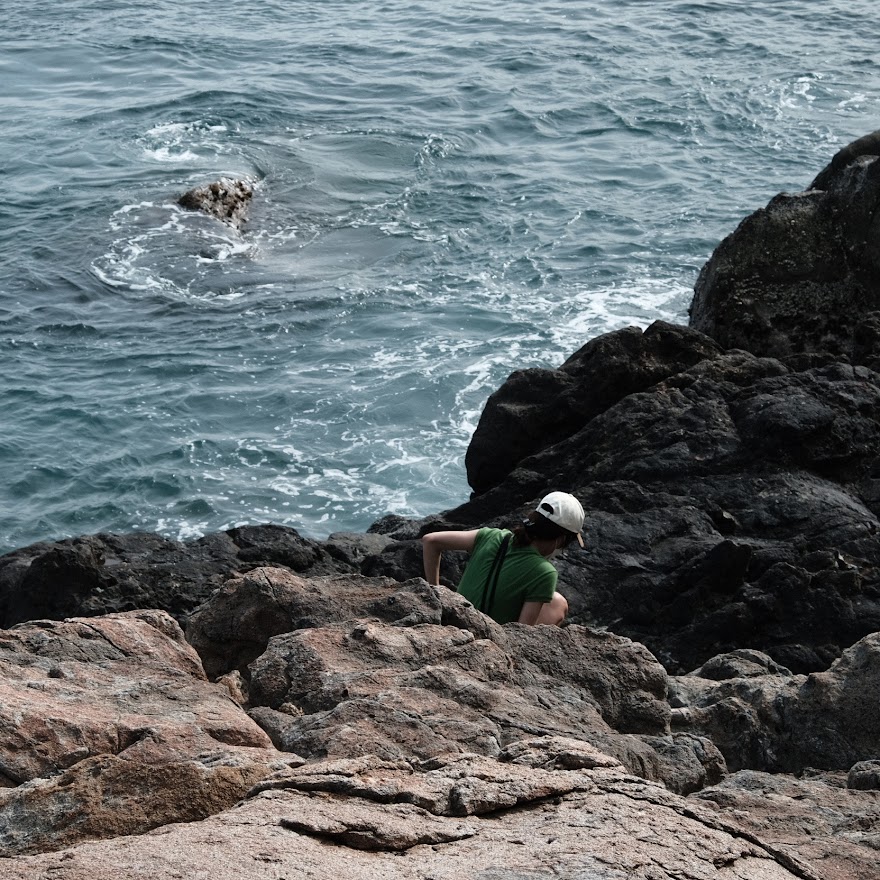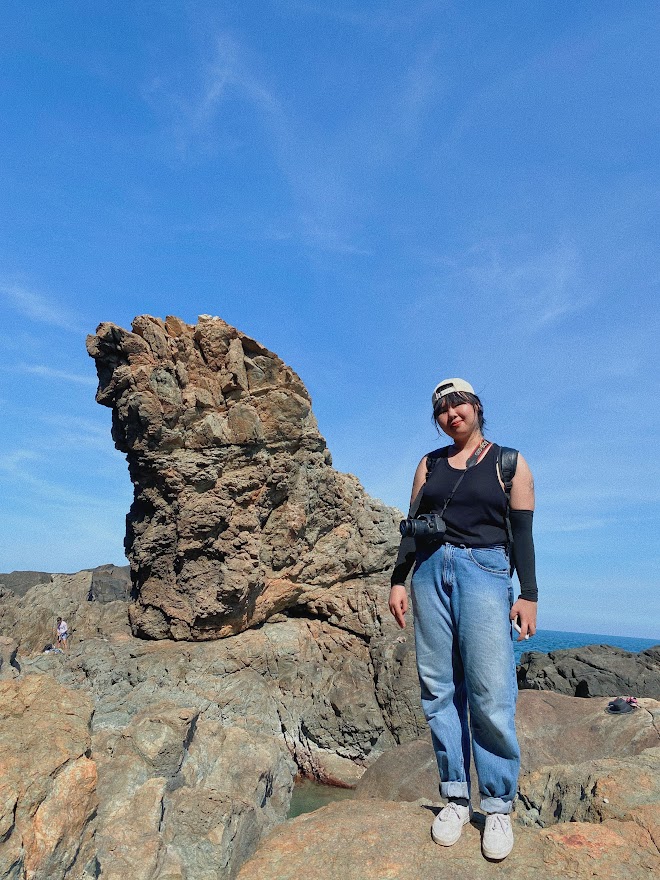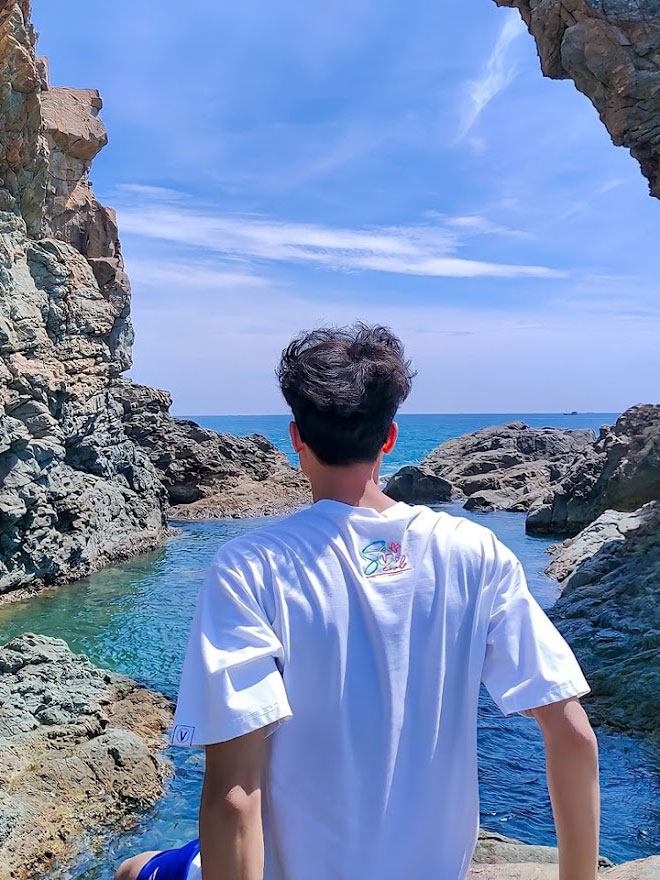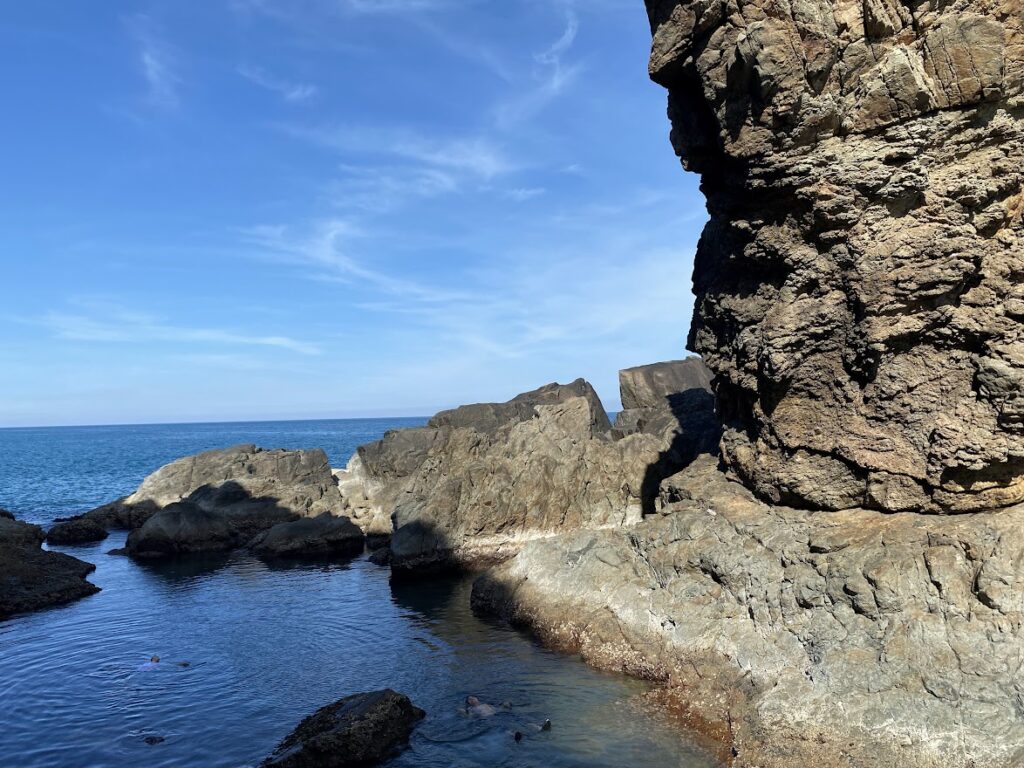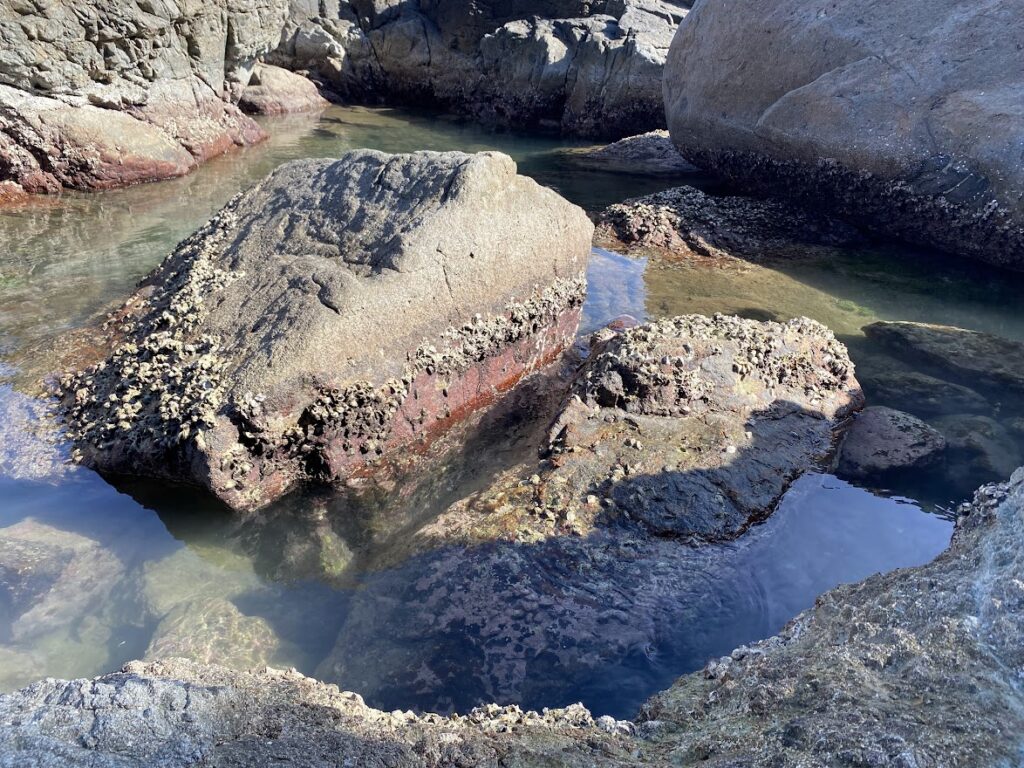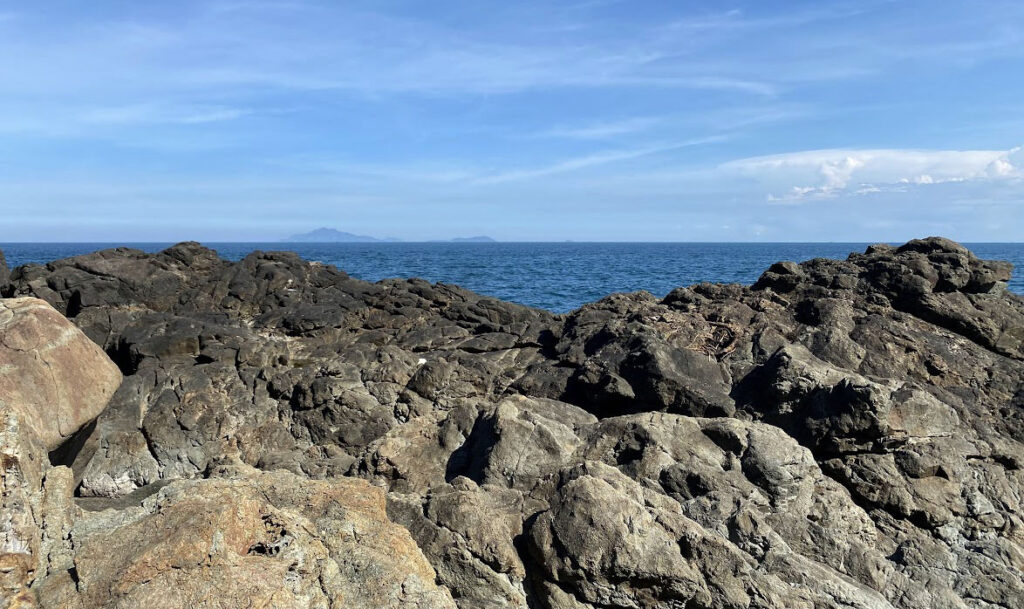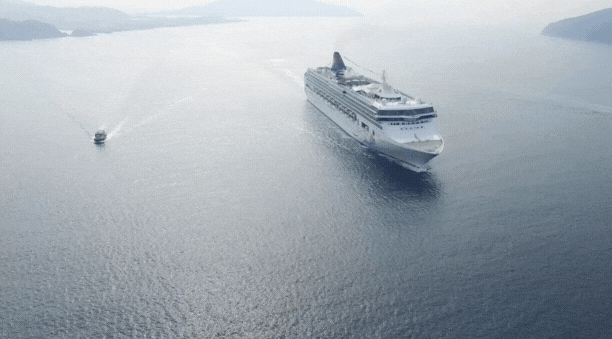The Son Tra Peninsula in Da Nang is probably where the most fascinating things are hidden and where there are still unexplored areas perfect for nature exploration. Visitors may have visual imagery of the Linh Ung Pagoda, the top of the checkerboard, the 1,000-year-old banyan tree, or stunning beaches like Bai But, Ghenh Bang, Bai Da Den, etc. Are you know about Mui Nghe? a natural beach with stunning blue lakes and tough woodland trails. To locate Mui Nghe, follow the path taken by Danang Leisure!
Guide to Mui Nghe
There will be a road and a waterway on the route to Mui Nghe. You will have varied great experiences no matter how you get here.
By road: Mui Nghe is situated on the Son Tra peninsula, heading Southeast and directly to the 1,000-year-old banyan tree. You then proceed 200 meters straight ahead to the end of the road, where you are able to park. By car or motorcycle, you can get there. If you look carefully, you will see a short road that leads to the sea on the right side. You only need to cross this street to go to Mui Nghe.
Waterway: You have two choices: either take a boat to travel directly to Mui Nghe. Although the boats frequently run late, you will arrive sooner. Or, you can reserve a spot in advance with the agencies who arrange SUP (Stand-up Pad) sailing to Mui Nghe early in the morning to see the sunrise. You shouldn’t skip out on this event either; it’s fascinating. This is also regarded as one of the activities in Da Nang that are worthy.
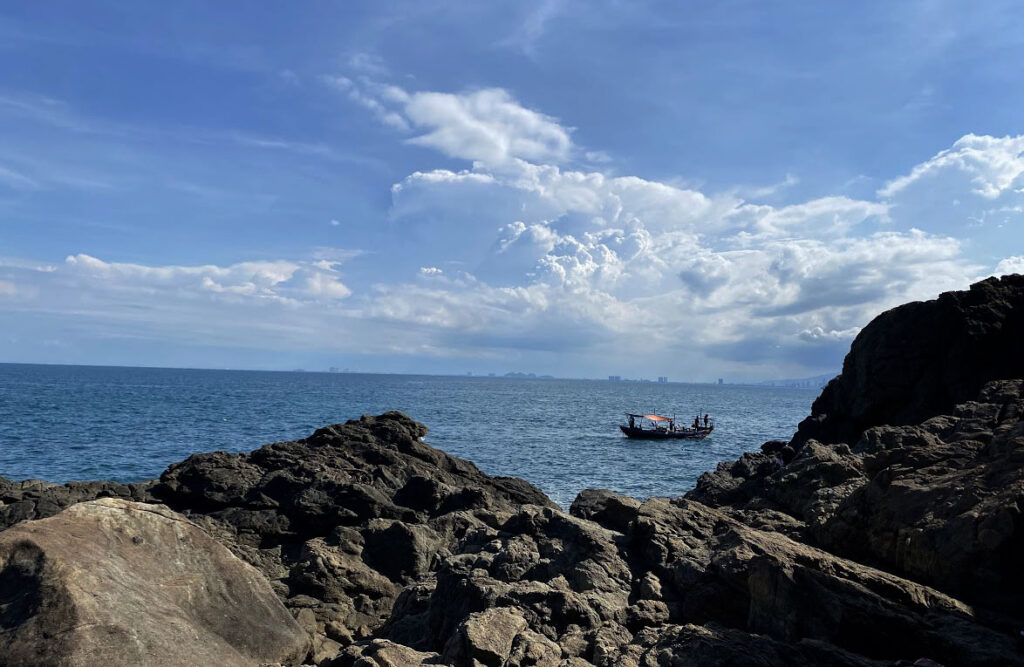
A good time to explore Mui Nghe
The best time to visit Mui Nghe is still the sunny season, especially the summer with fresh air and calm sea because Mui Nghe is located in the sea and the only way to get there is by going through the forest or traveling on the water. In this season, the road through the woodland is not too slippery, and it is calm.
When you arrive, make sure to check that the weather is stable. You wouldn’t want to get lost in the woods, after all.
The morning to afternoon will be the most suitable time of the day. Make plans for your return as soon as possible because the route will be challenging to walk, forcing you to ascend cliffs, and steep slopes with the use of ropes, and pass through a deserted forest. This road will become more difficult and dangerous after it is dark. Therefore, a suitable time to return is around 4 PM.
What is interesting about Mui Nghe?
Son Tra used to be an island made up of three tall mountains. The southeast top is known as Hon Nghe because it resembles a mascot in the mythology of Việt Nam called Nghê leaning out to sea. The western top is known as the Mỏ Diều because it resembles a hawk’s beak. The northern point, which is as long as a horse’s neck and stretches toward Ngự Hải mountain on the other side of the sea opening, is known as Cổ Ngựa peak.
Mui Nghe often referred to as Hòn Nghê, is linked to the development of the Sơn Trà peninsula. The name refers to the mountain’s shape, which resembles a mascot in Viet Nam’s mythology lying with its head toward the rocky peak and facing the sea. This area, which is on the other side of the forest and descends to the sea, is still unexplored and relatively unknown, and since it hasn’t been developed for tourists, it has been able to keep its natural characteristics.
1. The road leads to Mui Nghe
You continue traveling from the city’s center toward the Sơn Trà peninsula and directly in the direction of the thousand-year-old banyan tree. Perhaps there is no need to explain more when the Sơn Trà Peninsula Road is one of Da Nang’s most attractive routes since you can see the entire city from above, the forest on your left, the mountain in front of you, and the sea on your right. You will see more of this region’s natural splendor as you travel farther into Sơn Trà Peninsula. Away from the bustle of the city, surrounded only by greenery and fresh air.
You must proceed straight to the end of the road from the Thousand Years Banyan Tree; if you look carefully, you will discover a short trail that goes to the sea on the right side. To get to the Mui Nghe cliffs, simply continue down this road and travel through the forest for 20 to 30 minutes.
Following the Son Tra peninsula’s slopes, inside is a still-untouched forest. Although the route is not very challenging, you should take precautions because the numerous twists can cause you to become confused and lose your way in the forest. Although it’s refreshing to walk among the trees, there will be some slippery areas.
2. A blue lake close to the sea
In addition to the rock that is shaped like Nghê, Mui Nghe is famous for its soft blue lakes. In this location, you can swim easily and take photos that capture the sea’s unusually calm blue tone.
In front of your eyes is a crystal blue lake, clear to the bottom, bordered on all sides by rocks and mountains. This location is not directly affected by sea waves; instead, only slight ripples suffice. You can go swimming as often as you wish in crystal-clear blue water. Despite the area’s small size, there are numerous fish and corals in this zone.
The finest feature of visiting Mui Nghe is the tranquility and lack of noise brought on by the small number of visitors. It’s unusual to discover a location this lovely with so few people. And without a doubt, you’ll realize how priceless it is to be buried in the chilly blue ocean and merge with the majesty of nature.
3. Lawns and steep cliffs
The first thing you will see after leaving the forest is a broad, lush lawn surrounded by rocky cliffs. Finding this rocky beach after trekking the forest is like finding a gift because the wind, sea, and grass will all surround you.
A huge sea can be seen from every angle, and a city can be seen on the other, much further to the right side. You can already see Mui Nghe from here. Be cautious, though, as little stones could cause you to slip. To get to the Mui Nghe area from here, you must travel for another 20 minutes while crossing cliffs and watery rock formations. Take a close look around you and take the path that leads downward!
4. Day for camping, BBQ party, and enjoying the sunrise
Watching the sunrise is one of the nicest things to do here because Mui Nghe is the first location you can view it from the other side of the ocean.
The ideal location to pitch a tent is on the first lawn you see after exiting from the woods. However, because it is so close to the sea and its height, this site will experience a sea breeze in the evening. You can have a BBQ party in the evening while taking in the serenity of the nighttime sea. A special memory from this vacation is holding a cup of coffee while waiting for the sun to rise in the morning.
Considerations for the Mui Nghe trek
You’ll definitely need these notes if you want to explore Mui Nghe because it’s still rather hard to travel and wild in this area.
Make sure the weather is sunny and dry before you travel because there is a forest crossing and a descent to the seashore. to avoid slipping and unstable waters. Additionally, if you decide to travel by road, take a manual transmission bike or car. Because automatic transmission motorbikes are not permitted on the road leading to the 1,000-year-old banyan tree for the protection of tourists.
Second, whether you go camping or have a picnic, ensure that you pick up the trash and bring it back home. In addition to appreciating nature, we should protect this region for future generations.
“Leave only footprints behind you.“
Even though this will be a mild trek, in the end, there will still be challenging topography to handle. Avoid carrying items that will wear you out while you are moving. Keep an eye out for the red ropes left by people who went before to prevent getting lost in the woods. You may discover the way by just following the red ropes.
This information on this great location should help you have a nice and safe exploring trip.




